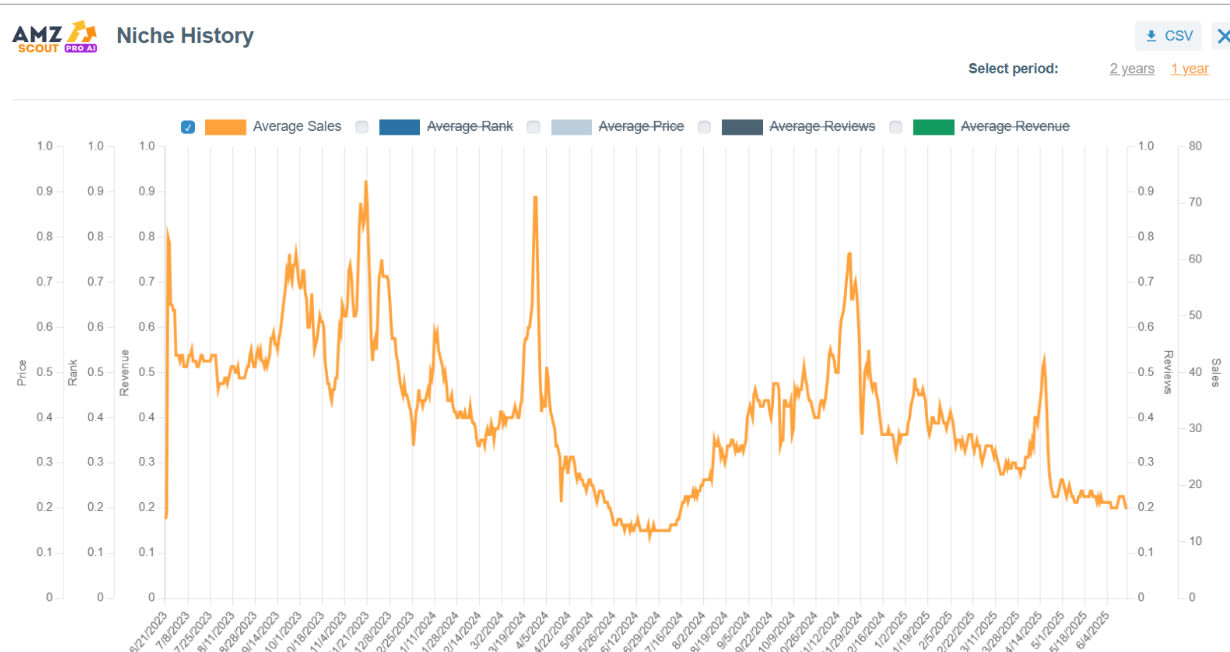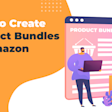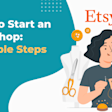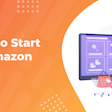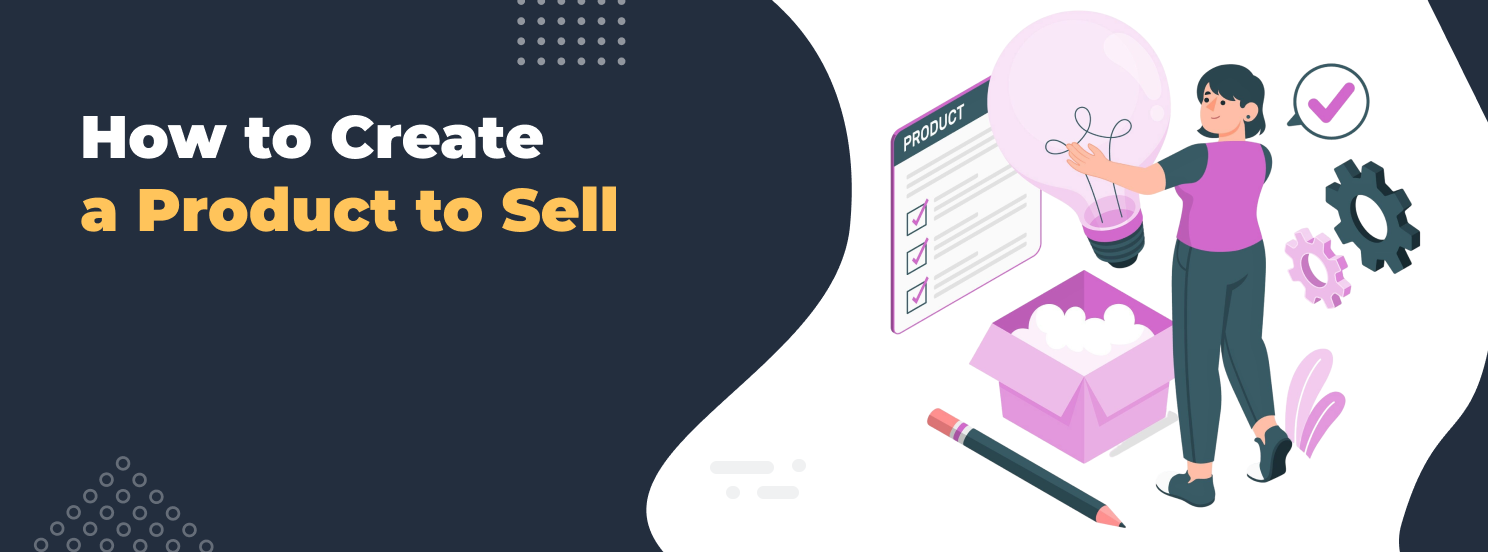
How to Create a Product to Sell: A Complete Step-by-Step Guide
Creating an original product is one of the most rewarding paths in business, as it provides creative freedom, financial independence, and solid profit margins. However, starting from scratch can feel overwhelming, as there are multiple steps from idea to execution. To turn a concept into something people actually want to buy, you need careful planning, research, and a solid strategy.
In this article, we share a step-by-step plan to help you create a product that sells.
How to Create a Product: A Step-by-Step Guide
While the process of creating a product can vary depending on the category, features, design, and purpose, the guide below provides the general steps to developing a product to sell:
Note: While there are many types of products you might offer (digital, physical, and services) this article focuses specifically on creating a physical product you can manufacture and sell.
Step 1: Define the Problem and Identify a Market Need
While it may be tempting to jump straight into creating your dream product, success starts with understanding the market. Before you do anything, you need to spend time researching gaps and unmet needs within your niche.
Consider running surveys or organizing focus groups to validate real customer problems. You might create a simple Google Form and ask friends and relatives for input.
For example, if you're interested in creating a sunglasses brand, you might start by asking people who are part of the fashion or travel communities. You may notice that many mention frustration with flimsy frames, lack of UV protection, or styles that don’t suit different face shapes.
These recurring pain points can reveal clear opportunities to create something more tailored to customer needs.
Step 2: Brainstorm and Conceptualize Your Idea
Once you’ve identified a market need and developed an initial idea, the next step is to brainstorm and shape the idea into a clear, workable concept. This helps you move from a general vision to a product with real potential.
Ask yourself questions like:
What specific problem does this product solve for the customer?
What materials, design elements, or functionality should it include?
Who is the ideal user, and how will they use it in real life?
For example, in the toy niche, parents often struggle to find products that are safe, educational, engaging, and durable—especially since many toys break easily or lose their appeal quickly. A product that combines all of these features could clearly stand out and address a real need.
Step 3: Conduct Market Research and Competitive Analysis
To create a product that succeeds, you need to understand what makes it stand out. It’s not just about having a good idea—it’s about identifying your product’s unique value and how it compares to what’s already available.
Study Existing Products
Start by exploring popular marketplaces like Amazon, eBay, and niche-specific stores. Search for products that are similar to your idea to see how many others exist, which features are most common, and which products are top performers. Make a shortlist of standout products that regularly appear on bestseller or highly-rated lists.
Analyze Competitors’ Offerings
Take a closer look at what competitors are doing including how they present their products, their pricing strategies, and how they position themselves. Pay special attention to product reviews, which reveal patterns in customer satisfaction and disappointment. This allows you to refine your concept and offer a version that solves real problems or adds clear value.
Going through reviews manually takes time—and it’s easy to miss recurring themes. That’s where the AMZScout AI Review Analyzer comes in.
Find Gaps and Opportunities with the AMZScout AI Review Analyzer
While this tool is designed for Amazon, it also accurately reflects broader consumer trends since many products are sold across multiple platforms. Not only does this help you avoid repeating others’ mistakes, but it also enables you to create something that feels tailored to your audience.
Here’s how it works:
Go to the AI Review Analyzer page. Enter your email address to start a free trial.
Input the product’s ASIN.
Click “Get Review Analysis.” In seconds, the tool will show you summaries and statistics letting you know what customers like and dislike.
With these insights, you’ll identify common complaints and unmet expectations, and spot features that customers truly value, making it easier to design a desirable product.
Define the Final Customer
Now that you understand the market landscape and customer pain points, it’s time to clearly define who you’re building the product for. Pinpoint your core user group by age, lifestyle, priorities, and spending habits. This helps to refine your product’s design, messaging, and pricing to match their expectations.
Step 4: Validate Your Idea and Gain Feedback
Even if you already have a clear idea of what your product will be, it’s still important to validate its profitability before moving into the next phases of development. This helps to ensure that your product will be worth the time, effort, and investment.
You'll need to assess potential sales volume, evaluate competition, and consider other key factors that influence profitability. To illustrate this process, we’ll use Amazon as an example since it's a leader in e-commerce, and there are specialized tools that provide detailed data on market performance. One of the most useful tools for this is AMZScout PRO AI.
Here’s how to use it:
1. Install the AMZScout PRO AI Extension. Sign up with your email address to start a free trial and access its features.
2. Look up a product. Enter a product name, (such as “kid’s knitted sweater”) into Amazon’s search bar. Open the AMZScout extension by clicking the icon in the top-right corner of your browser.
3. Review the niche’s profitability. Analyze the niche’s metrics, such as estimated sales and net margin at the top of the screen.
For example, a “kid’s knitted sweater” on Amazon generates 881 sales/month and $8,064 in revenue.
4. Check the niche’s demand. Click Niche Score to see a breakdown of the competition and demand for the whole niche.
For example, the “kid’s knitted sweater” niche has a score of 7, indicating desirable prices and very high sales. However, many products in this niche have low ratings.
5. Check the niche history. Click on Niche History to see if products in this niche have stable demand or are seasonal, and whether the trend is stable, positive, or negative at the moment.
For example, we can see that sales for “kids’ knitted sweaters” are extremely low during the late spring and summer, meaning you need to plan your stock carefully to avoid leftovers.
6. Check the competition. Check the Number of Reviews column to identify whether any strong brands dominate the niche and to get a sense of the average review count among competitors.
For example, in the case of “kids’ knitted sweaters,” most brands on the first page (aside from Amazon’s own) are relatively unknown, and several products have fewer than 200 reviews.
7. Select a product for a closer look. If a niche looks promising, analyze the products from the search results. You can sort them by criteria that matter most to you, (like “Estimated Sales”, which can be found next to each product). This will help you identify the top performers.
8. Estimate your monthly profit. Select a product and click on the Profit Calculator to input your data (e.g. product price, shipping, and production costs). Target products with a net margin exceeding 20% after accounting for all costs.
Tip: Use the “Product Improvement” feature to discover AI-generated suggestions for refining your product and gaining a competitive edge. Select “AI Product Analysis”, and then click “Product Improvement” to receive tailored recommendations that will help you differentiate your product.
This way, you’ll get a clear picture of how this type of product performs and be able to assess your potential profit—helping you decide whether the business is truly worth pursuing.
Step 5: Design Your Product for Manufacturing
You might choose to develop the design on your own or collaborate with industrial designers to bring your idea to life in a way that’s both attractive and practical for production. It’s also a good time to think about packaging, making sure it aligns with your overall brand identity. Balancing costs is important, but keeping quality in focus will pay off in customer satisfaction and fewer returns.
Step 6: Address Regulatory Requirements
Before moving forward, it’s important to ensure that your product complies with all legal and safety regulations in your target market. It may also be useful to consult local laws regarding taxes. For example, in the U.S., small businesses can benefit from tax deductions if everything is set up correctly. In addition, consider protecting your intellectual property by registering your brand with the USPTO.
Tip: If you plan to sell on Amazon, joining the Brand Registry program can help safeguard your brand and give you access to advanced tools for marketing at no extra cost.
Step 7: Find the Right Manufacturer
If you’re not making the product yourself, you’ll need to find a reliable partner to manufacture it. Alibaba is one of the largest platforms for sourcing manufacturers, but it’s important to stay cautious and selective. Keep the following factors in mind during this stage of product development:
Scam prevention: Always research the supplier’s name online and check for fraud reports or negative reviews.
Capabilities: Make sure the manufacturer can support customization or assist with inventing a new product.
Costs: Review minimum order quantities (MOQs), shipping options, and potential customs fees based on their location.
Experience: Choose manufacturers with a solid track record in your product category.
Certificates – Check for relevant certifications to ensure compliance with industry standards.
Tip: Always request a prototype or small test batch first to assess quality.
It’s also worth paying attention to how responsive and clearly the supplier communicates, as this can make a big difference when it comes to managing larger orders. Clear dialogue often leads to fewer misunderstandings and a smoother path to getting your product to market.
Step 8: Build and Test Prototypes
At this stage, create one or more prototypes to see how your product performs in real conditions. Prototypes help you evaluate user experience before going into production. Share them with a small group of potential users to gather feedback and spot areas for improvement. This input is key to refining your product and avoiding costly mistakes later.
Step 9: Plan Your Launch Strategy
One of the most important—but often overlooked—steps in product creation is planning your selling strategy. Key things to consider include:
Selling channel: For a new product without reviews, marketplaces like Amazon can be a great starting point, as buyers feel more secure thanks to return policies and customer protection.
Promotion: Think about how you'll generate interest and drive traffic to your product. Consider running paid ads to gain quick visibility and partnering with influencers to build trust and credibility for your product.
Pricing strategy: Set a price that reflects your product’s value while staying attractive in your chosen market. Don’t forget to factor in production, marketing, and shipping costs to ensure healthy profit margins.
If you already have all of this mapped out in your mind—great! Let’s move on to the next stage.
Step 10: Begin Production
Once the prototype has been tested and approved, it’s time to move forward with full-scale manufacturing of your product. It’s also important to arrange for reliable shipping from your manufacturer—either directly to you or to your distributor. When the products arrive, take time to inspect their quality to avoid surprises down the line. Finally, look for ways to streamline the entire process to save time and keep costs under control.
Launching your own brand takes time and patience. The first product might not be perfect but with experience, each new version gets better, and you’ll learn how to make a product people truly want.
Conclusion
Product creation success depends on having a solid strategy—sourcing materials, setting up production, and more, but it all starts with a strong idea. Consider using the AMZScout toolkit to discover high-demand product ideas backed by real data. This helps you focus on products with strong sales potential and build a sustainable, long-term business.





